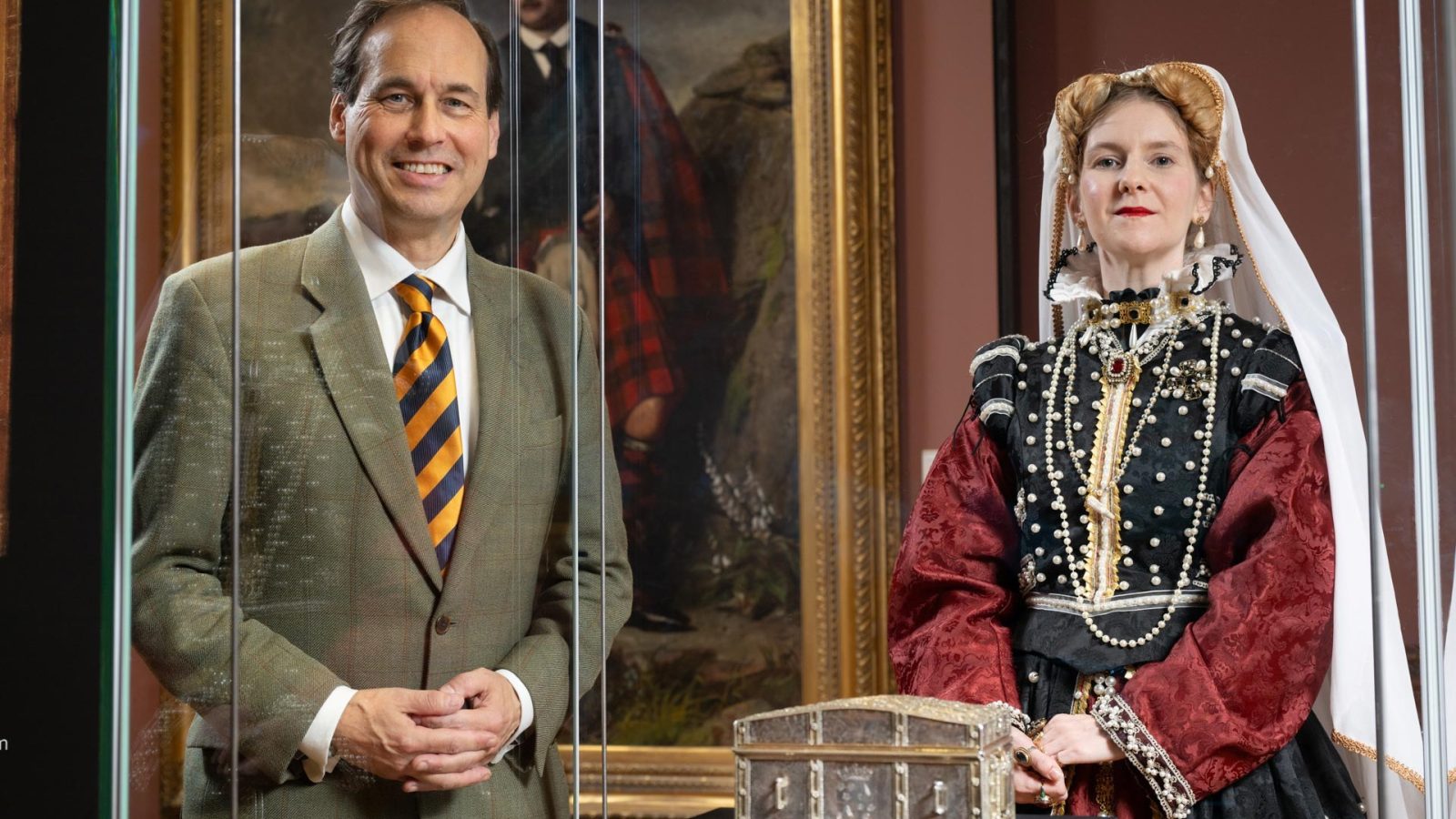One of Scotland’s most cherished treasures, a rare French silver casket believed to have been owned by Mary, Queen of Scots, has gone on display at Aberdeen Art Gallery.
This iconic piece of Scotland’s national heritage is on loan from National Museums Scotland. It was acquired for the nation in 2022 for £1.8million thanks to support from the National Heritage Memorial Fund, Art Fund, the Scottish Government and several trusts, foundations and individual donors.
Made in Paris, probably between 1493 and 1510, the casket is a superb and extremely rare work of early French silver, very little of which survives, even in France. It is likely that its long-standing association with Mary has kept it preserved for over 450 years.
For three centuries, it was owned by the family of the Dukes of Hamilton, following its acquisition, around 1674, by Anne, Duchess of Hamilton. According to a handwritten note stored with it from the late 17th century, she bought the casket, previously owned by Mary, Marchioness of Douglas, on the understanding that it had belonged to Mary, Queen of Scots.
The note records the belief that this is the casket which played a dramatic role in Mary’s downfall when, in December 1568, a similar casket was produced at a hearing ordered by Elizabeth I against Mary at Westminster. This contained what have become known as the Casket Letters. These love poems and letters, allegedly from Mary to her third husband, the Earl of Bothwell, implicated them both in a conspiracy to murder her second husband, Lord Darnley.
It is thought that the casket was given to Mary by her first husband, François II of France, and came to Scotland with her in 1561 after his death in 1560. Her inventories from this time list multiple examples of precious jewellery and other such valuable objects. The survival of this casket is particularly significant. In the late 1600s, the French King Louis XIV ordered valuable objects like this to be melted down to pay for his armies. The casket escaped this fate because it had probably left France with Mary.

Councillor Martin Greig pictured with ‘Mary, Queen of Scots’ and the silver casket
A casket first appears in the records following Mary’s arrest in 1567 by the rebellious Confederate Lords, when it is discovered in the hands of Lord Bothwell’s servant. It was brought before the Scottish Privy Council where its lock was struck off to reveal its contents. Precisely what these were at that moment is unknown. However, a year later, when the Earl of Moray dramatically produced the same casket at Westminster, it now contained the damning Casket Letters.
The authorship of the letters remains a subject of debate, but it is widely thought that they were doctored. Following the hearing at Westminster, Mary remained in English captivity for 19 years, until she was executed in 1587 for her involvement in the Babington Plot to assassinate Elizabeth I, and place Mary on the English throne.
The Highlight Loan of the Mary, Queen of Scots Casket to Aberdeen Art Gallery is part of National Museums Scotland’s National Strategy, which sees collections and expertise shared through loans, participation in national projects, community engagement, funding for acquisitions and free knowledge and skills development opportunities for museums across Scotland.
Councillor Martin Greig, Aberdeen City Council’s culture spokesperson, said: “We are absolutely thrilled that one of Scotland’s national treasures is going on display at Aberdeen Art Gallery. There are no other comparable caskets known to exist from this period, making the Mary, Queen of Scots Casket particularly rare. We’re delighted to be working with National Museums Scotland to present this Highlight Loan for the people of Aberdeen and visitors to the city to enjoy.”
Dr Anna Groundwater, Principal Curator, Renaissance and Early Modern History at National Museums Scotland, said: ““One of Scotland’s national treasures, this extraordinary casket has been venerated as a relic of Mary, Queen of Scots for centuries. This highlight loan is part of National Museums Scotland’s National Strategy, which sees collections and expertise shared with museums across Scotland. I’m delighted that visitors to Aberdeen Art Gallery will get to see the casket up close. Beyond its connections to one of Scotland’s most famous figures, it is a rare and spectacular piece of historic silver in its own right.”
Dr Groundwater will be giving a free talk at the Art Gallery about this this extremely rare piece of early Renaissance French silver and considering what its association with Mary, Queen of Scots says about her life.